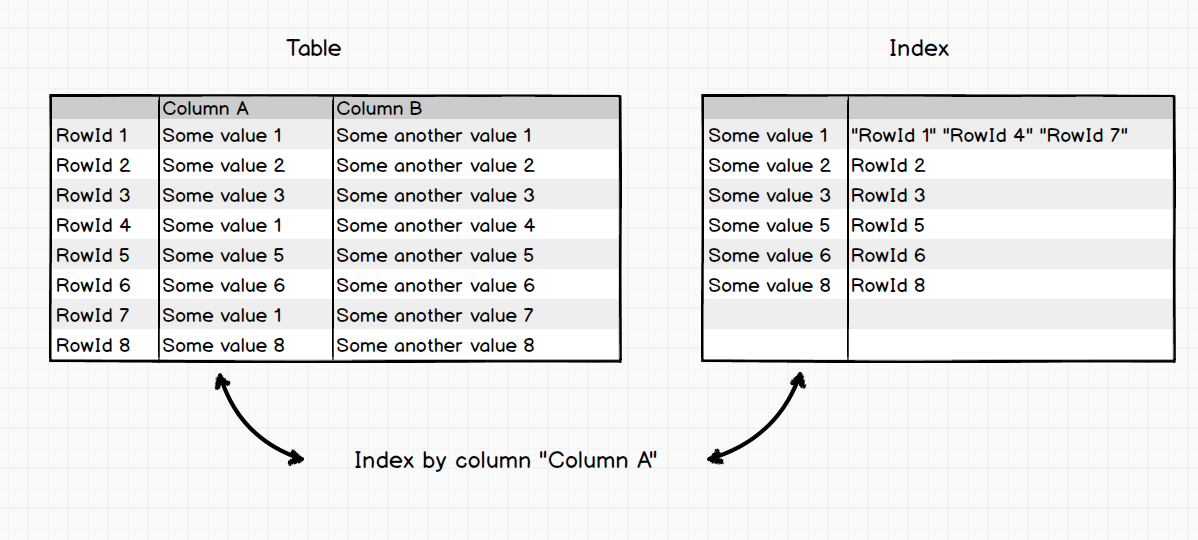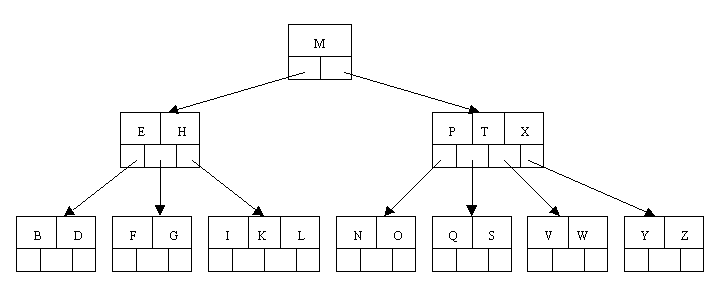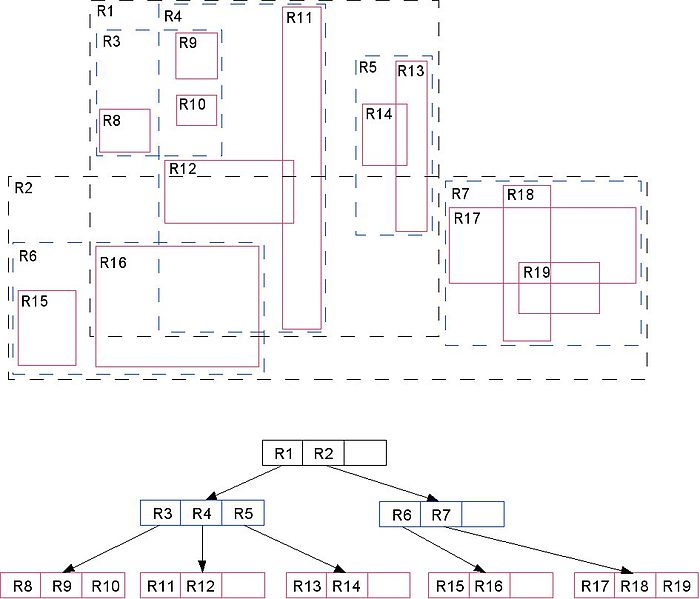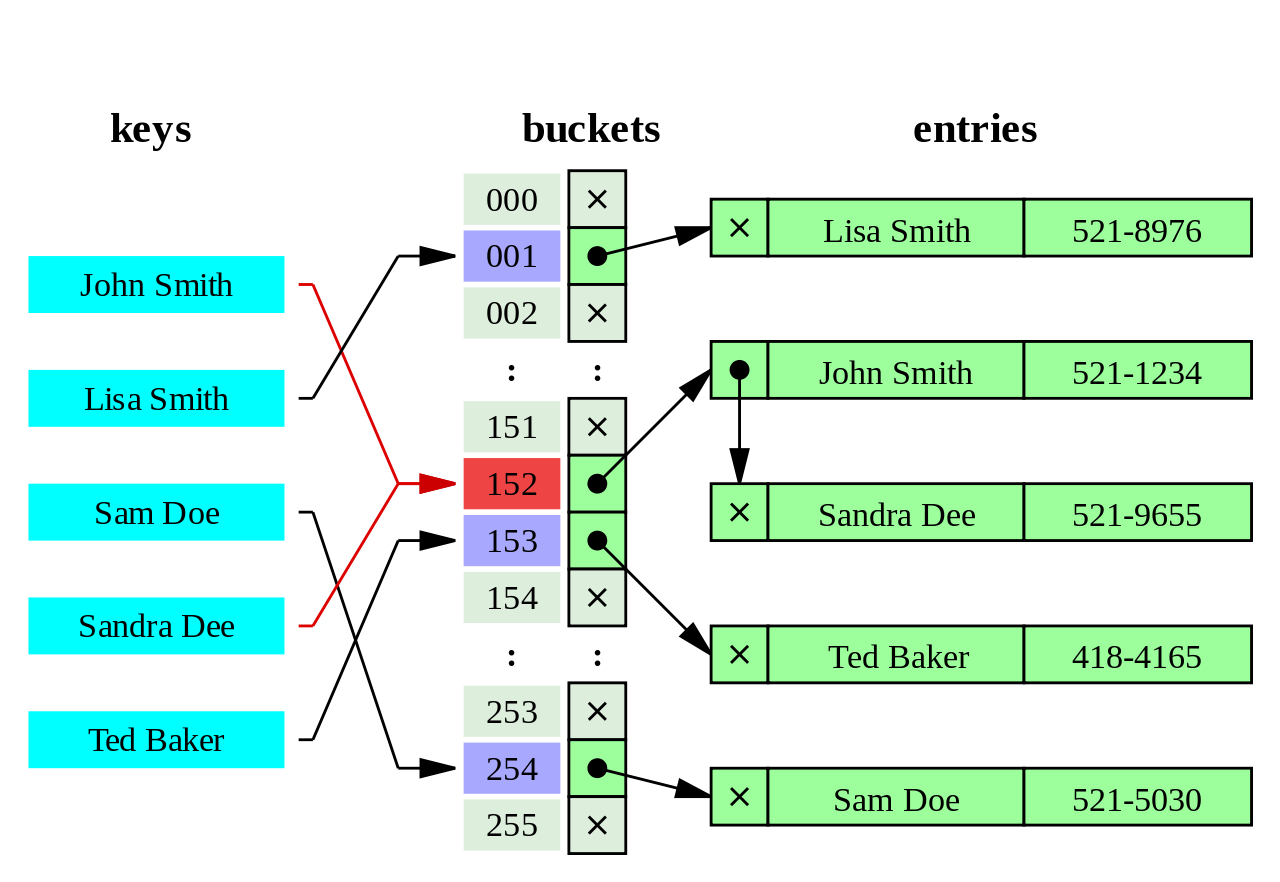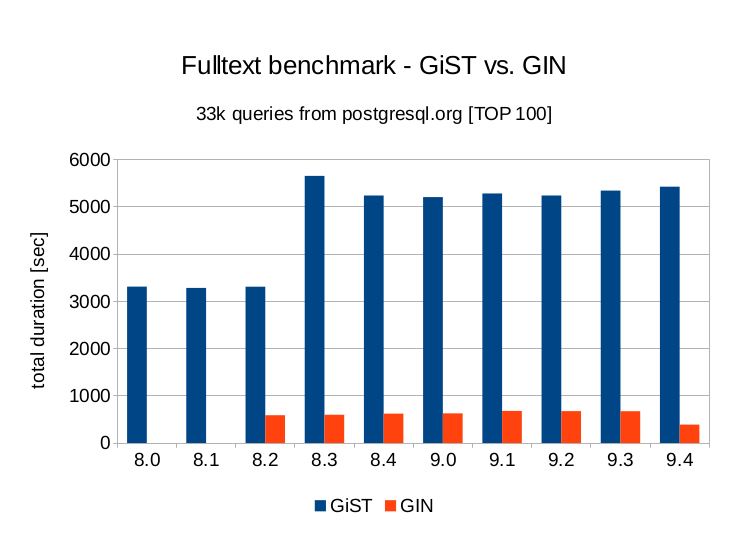PostgreSQL Indexes
Hello my dear friends. This is my new article in which I would like to to tell you about PostgreSQL indexes.
First of all what is Index?
For the beginning let us remind ourselves what is a table in relational database.
Table in a relational database is a list of rows, in the same time each row have cells. The number of cells and cell types in the row is the same as a scheme of a column (columns) in table. This list of rows has consecutively numbered RowId sequence number. So, we can consider table as list of pairs: (RowId, row).
Indexes are in the inverse relationship: (row, RowId). In index row must contain at least one cell. Obviously, if a row is not unique (two identical rows), these relations look like mapped RowId list.
Index is an additional data structure, which can help us with:
- Data search - all indexes support search values on equality. Some indexes also support prefix search (like “abc%”), arbitrary ranges search
- Optimizer - B-Tree and R-Tree indexes represent a histogram arbitrary precision
- Join - indexes can be used for Merge, Index algorithms
- Relation - indexes can be used for except/intersect operations
- Aggregations - indexes can effectively calculate some aggregation function (count, min, max, etc)
- Grouping - indexes can effectively calculate the arbitrary grouping and aggregate functions (sort-group algorithm)
PostgreSQL Index Types
There are many types of indexes in PostgreSQL, as well as different ways to use them. Let’s review all these indexes.
B-Tree index
B-Tree is the default index that you get when you do CREATE INDEX. Virtually all databases will have some B-tree indexes. The B stands for Balanced (Boeing/Bayer/Balanced/Broad/Bushy-Tree), and the idea is that the amount of data on both sides of the tree is roughly the same. Therefore the number of levels that must be traversed to find rows is always in the same approximate number. B-Tree indexes can be used for equality and range queries efficiently. They can operate against all datatypes, and can also be used to retrieve NULL values. Btrees are designed to work very well with caching, even when only partially cached.
Advantages:
- Retain sorting data
- Support the search for the unary and binary predicates
- Allow the entire sequence of data to estimate cardinality (number of entries) for the entire index (and therefore the table), range, and with arbitrary precision without scanning
Disadvantages:
- For their construction is require to perform a full sorting pairs (row, RowId) (slow operation)
- Take up a lot of disk space. Index on unique “Integers” weights twice more as the column (because additionaly RowId need stored)
- Recording unbalances tree constantly, and begins to store data sparsely, and the access time is increased by increasing the amount of disk information. What is why, B-Tree indexes require monitoring and periodic rebuilding
R-Tree index
R-Tree (rectangle-tree) index storing numeric type pairs of (X, Y) values (for example, the coordinates). R-Tree is very similar to B-Tree. The only difference is the information written to intermediate page in a tree. For the i-th value of the B-Tree node we write the most out of the i-th subtree. In R-Tree it is a minimum rectangle that encloses all the rectangles of the child. Details can be seen in figure:
Advantages:
- Search for arbitrary regions, points
- Allows us to estimate the number of dots in a region without a full data scan
Disadvantages:
- Significant redundancy in the data storage
- Slow update
In general, the pros-cons are very similar to B-Tree.
Hash index
Hash index doesn’t store the values, but their hashes. Such indexing way reducing the size (and therefore increased speed and processing) of high index fields. In this case, when a query using Hash indexes will not be compared with the value of the field, but the hash value of the desired hash fields.
Because hash functions is non-linear, such index cannot be sorted. This causes inability to use the comparisons more/less and “IS NULL” with this index. In addition, since the hashes are not unique, then the matching hashes used methods of resolving conflicts.
Advantages:
- Very fast search O(1)
- Stability - the index does not need to be rebuild
Disadvantages:
- Hash is very sensitive to collisions. In the case of “bad” data distribution, most of the entries will be concentrated in a few bouquets, and in fact the search will occur through collision resolution.
As you can see, Hash indexes are only useful for equality comparisons, but you pretty much never want to use them since they are not transaction safe, need to be manually rebuilt after crashes, and are not replicated to followers in PostgreSQL (all this fixed in PostgreSQL 10).
Bitmap index
Bitmap index create a separate bitmap (a sequence of 0 and 1) for each possible value of the column, where each bit corresponds to a string with an indexed value. Bitmap indexes are optimal for data where bit unique values (example, gender field).
Advantages:
- Compact representation (small amount of disk space)
- Fast reading and searching for the predicate “is”
- Effective algorithms for packing masks (even more compact representation, than indexed data)
Disadvantages:
- You can not change the method of encoding values in the process of updating the data. From this it follows that if the distribution data has changed, it is required the index to be completely rebuild
PostgreSQL is not provide persistent bitmap index. But it can be used in database to combine multiple indexes. PostgreSQL scans each needed index and prepares a bitmap in memory giving the locations of table rows that are reported as matching that index’s conditions. The bitmaps are then ANDed and ORed together as needed by the query. Finally, the actual table rows are visited and returned.
GiST index
Generalized Search Tree (GiST) indexes allow you to build general balanced tree structures, and can be used for operations beyond equality and range comparisons. The tree structure is not changed, still no elevators in each node pair stored value (the page number) and the number of children with the same amount of steam in the node.
The essential difference lies in the organization of the key. B-Tree trees sharpened by search ranges, and hold a maximum subtree-child. R-Tree - the region on the coordinate plane. GiST offers as values in the non-leaf nodes store the information that we consider essential, and which will determine if we are interested in values (satisfying the predicate) in the subtree-child. The specific form of information stored depends on the type of search that we wish to pursue. Thus parameterize R-Tree and B-Tree tree predicates and values we automatically receive specialized for the task index (examples: PostGiST, pg_trgm, hstore, ltree, etc.). They are used to index the geometric data types, as well as full-text search.
Advantages:
- Efficient search
Disadvantages:
- Large redundancy
- The specialized implementation for each query group are nessesary
The rest of the pros-cons similar to B-Tree and R-Tree.
GIN index
Generalized Inverted Indexes (GIN) are useful when an index must map many values to one row, whereas B-Tree indexes are optimized for when a row has a single key value. GINs are good for indexing array values as well as for implementing full-text search.
Key features:
- Well suited for full-text search
- Look for a full match (“is”, but not “less” or “more”).
- Well suited for semi-structured data search
- Allows you to perform several different searches (queries) in a single pass
- Scales much better than GiST (support large volumes of data)
- Works well for frequent recurrence of elements (and therefore are perfect for full-text search)
Block Range (BRIN) Index (9.5+)
BRIN stands for Block Range INdexes, and store metadata on a range of pages. At the moment this means the minimum and maximum values per block.
This results in an inexpensive index that occupies a very small amount of space, and can speed up queries in extremely large tables. This allows the index to determine which blocks are the only ones worth checking, and all others can be skipped. So if a 10GB table of order contained rows that were generally in order of order date, a BRIN index on the order_date column would allow the majority of the table to be skipped rather than performing a full sequential scan. This will still be slower than a regular BTREE index on the same column, but with the benefits of it being far smaller and requires less maintenance.
More info about this index you can read in this article.
Partial Indexes
A partial index covers just a subset of a table’s data. It is an index with a WHERE clause. The idea is to increase the efficiency of the index by reducing its size. A smaller index takes less storage, is easier to maintain, and is faster to scan.
For example, suppose you log in table some information about network activity and very often you need check logs from local IP range. You may want to create an index like so:
CREATE INDEX access_log_client_ip_ix ON access_log (client_ip)
WHERE (client_ip > inet '192.168.100.0' AND
client_ip < inet '192.168.100.255');and such sql query will use such index
SELECT * FROM access_log WHERE client_ip = '192.168.100.45';This index will remain fairly small, and can also be used along other indexes on the more complex queries that may require it.
Expression Indexes
Expression indexes are useful for queries that match on some function or modification of your data. Postgres allows you to index the result of that function so that searches become as efficient as searching by raw data values.
For example, suppose you doing very often search by first leter in lower case from name field. You may want to create an index like so:
CREATE INDEX users_name_first_idx ON foo ((lower(substr(name, 1, 1))));and such sql query will use such index
SELECT * FROM users WHERE lower(substr(name, 1, 1)) = 'a';Unique Indexes
A unique index guarantees that the table won’t have more than one row with the same value. It’s advantageous to create unique indexes for two reasons: data integrity and performance. Lookups on a unique index are generally very fast.
There is little distinction between unique indexes and unique constraints. Unique indexes can be though of as lower level, since expression indexes and partial indexes cannot be created as unique constraints. Even partial unique indexes on expressions are possible.
Multi-column Indexes
While Postgres has the ability to create multi-column indexes, it’s important to understand when it makes sense to do so. The Postgres query planner has the ability to combine and use multiple single-column indexes in a multi-column query by performing a bitmap index scan (“Bitmap index” for more info). In general, you can create an index on every column that covers query conditions and in most cases Postgres will use them, so make sure to benchmark and justify the creation of a multi-column index before you create them. As always, indexes come with a cost, and multi-column indexes can only optimize the queries that reference the columns in the index in the same order, while multiple single column indexes provide performance improvements to a larger number of queries.
However there are cases where a multi-column index clearly makes sense. An index on columns (a, b) can be used by queries containing WHERE a = x AND b = y, or queries using WHERE a = x only, but will not be used by a query using WHERE b = y. So if this matches the query patterns of your application, the multi-column index approach is worth considering. Also note that in this case creating an index on a alone would be redundant.
Summary
Indexes are common way to enhance database performance. Index allows the database server to find and retrieve specific rows much faster than it can be without an index. But indexes also add overhead to the database system as a whole, so they should be used sensibly.
That’s all folks! Thank you for reading till the end.
